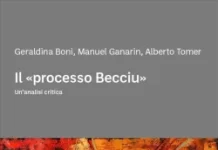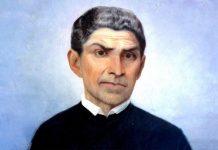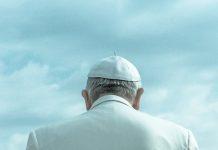Under unprecedented security, Alencherry implements the Liturgical changes as the Holy Father set a deadline of Easter Sunday, while 460 priests in the Archdiocese of Ernakulam-Angamaly continued to oppose the liturgical change vehemently.
KOCHI, India — Major Archbishop Cardinal George Alencherry launched the “uniform liturgy” of the Syro-Malabar Church (SMC) he heads, at St. Mary’s Basilica of Ernakulam in Kochi on April 10, amid unprecedented security due to fierce opposition from the local clergy and laity.
Around 200 police were posted around the basilica ahead of Cardinal Alencherry’s arrival at the cathedral in his Archdiocese of Ernakulam-Angamaly, for the 6:45am Palm Sunday Mass to launch the unified liturgy.
The liturgical controversy pertains to the orientation of the priest during the celebration of Mass. The synod of bishops of the SMC decided last year to implement a “uniform” Mass format from Nov. 28 onward, with the priest facing the faithful (versus populum) at the beginning of the Mass and turning toward the altar (ad orientem) at the time of the offertory. While a majority of the SMC’s 35 dioceses had been following this format already, it led to opposition in some of the dioceses where Mass was being said with the priests facing the faithful throughout Mass.
The Syro-Malabar Church is one of three Indian Churches in full communion with Rome, alongside the local Latin Catholic Church and the Syro-Malankara Church. It has an estimated 5 million members.
By the Nov. 28 deadline, despite sporadic protests in dioceses like Faridabad, Irinjalakkuda and Thrissur, all of the Syro-Malabar Church’s dioceses except Ernakulam-Angamaly had adopted the new format.
But most of the 460 priests in the Archdiocese of Ernakulam-Angamaly continued to oppose the liturgical change vehemently, resulting in Pope Francis’ direct intervention.
In a March 25 letter to the clergy of the archdiocese urging them to accept the “difficult and painful step,” the Holy Father set a deadline of Easter Sunday to launch the uniform Mass there.
The Pope’s letter followed a hunger strike by some priests and laypeople burning an effigy of Cardinal Alencherry, in the wake of the SMC synod’s decision to reject a request from Archbishop Antony Kariyil, the major archbishop’s metropolitan vicar who has headed the archdiocesan administration since 2019, to maintain the exception he had granted to archdiocesan priests to continue celebrating Mass only facing the people. In February, Cardinal Leonardo Sandri, prefect of the Vatican’s Congregation for the Oriental Churches, had endorsed the synod’s decision not to grant the exception, but that failed to quell the discord.
Clergy Refuse to Comply
Following the papal letter, the clergy of Ernakulam-Angamaly held a meeting on April 5 and proposed adopting the uniform liturgy starting at Christmas 2022 instead, “after catechizing the people,” because the diocese has been following the practice of priests facing the faithful throughout Mass for over half a century.
However, after an online meeting, the SMC synod of bishops rejected this proposal and reiterated the April 17 Easter deadline in an April 7 statement signed by both Cardinal Alencherry and Archbishop Kariyil. This in turn triggered an emergency meeting of the majority of archdiocesan priests on April 8 at the archbishop’s residence. With Archbishop Kariyil telling the assembled priests that he was “forced” to sign the joint statement, the priests revolted, refusing to comply with the Easter deadline.
“Archbishop Kariyil told our meeting that he was forced to sign a pre-prepared statement. Under canon law, this is illegal, and, hence, we cannot go by this deadline,” Father Kuriakose Mundadan, secretary of the Clergy Council of the Ernakulam Archdiocese, told a news conference at the entrance of the archbishop’s house after their meeting. He was flanked by dozens of priests.
The press conference, at which this correspondent was present, was disrupted by a couple of activists supporting Cardinal Alencherry, murmuring expletives against the priests.
Consequently, laypeople supporting the priests beat the activists and chased them out. Meanwhile, a group who had staged a sit-in against the clergy at the gate of the archbishop’s residence for 46 days, with the slogan “With the Pope and the Synod,” joined the fracas in the glare of extensive media coverage, generating newspaper headlines such as “Row over unified Mass spills over into street.”
Unprecedented Security
It was because of this tension that police had to offer unprecedented security for Cardinal Alencherry’s entry to the basilica on Palm Sunday to launch the uniform Mass. Though the service went off peacefully, under the watchful eyes of police stationed at all of the basilica’s doors and along the road, the absence of Archbishop Kariyil at Mass hinted at the simmering tensions in the local Church.
“The unified liturgy as decided by the synod and approved by the Pope is being launched today. Everyone should make a step backward and make a sacrifice for unity,” pleaded Cardinal Alencherry in his homily.
“The Pope had set a deadline, and the synod is bound to follow it. Delaying it would amount to defying the Pope,” Father Alex Onampally, spokesman and media commission secretary of the SMC, told the Register April 12 when asked why the cardinal decided to introduce the change in this way at the Palm Sunday Mass.
Following the service, speculation circulated widely on social media regarding Archbishop Kariyil’s status.
“Cardinal Alencherry has done what the Pope has directed. The synod does not want to create further tension,” Father Onampally said when asked about the future of the metropolitan vicar, in light of his conspicuous absence on Palm Sunday. “Cardinal Alencherry, to my knowledge, wants the tension to cool down and heal. We cannot stop the rumors.”
But those on the other side of the liturgical controversy say that Cardinal Alencherry’s decision to implement the uniform liturgy so quickly exacerbated the situation.
“The concerns on liturgical change raised by our clergy and laypeople have not been addressed by the synod,” Father Mundadan said. “Had there been discussion on this without imposing deadlines, we would not have reached a situation like this.”
Pointing out that only four of the archdiocese’s 320 parishes had celebrated with the uniform liturgy on Palm Sunday, he also noted that, after the launch of the uniform liturgy by Cardinal Alencherry, all of the subsequent Masses on Palm Sunday at the basilica were celebrated with priests facing the people.
He said the decision to initiate the uniform liturgy, made during an August 2021 session of the synod held online during COVID restrictions, had “created lot of divisions and confusions … [ignoring] the cry of the thousands of priests and faithful for a Holy Mass facing the people, which they have been following after the Second Vatican Council.”
Added Father Mundadan, “The synod did not listen to those bishops who dissented towards such a drastic decision.”
Meanwhile, Mathai Muthirenthy, general convener of the Samyukta Sabha Samrakshan Samithi (United Church Protection Council) that has been demanding implementation of the uniform liturgy, told the Register that their sit-in in front of Archbishop Kariyil’s residence, which began on Feb. 22, will wind up at noon on Easter — in keeping with the final deadline set by the Pope for implementing the liturgical change.
(Via NCR)
Compiled by Raju Hasmukh
































